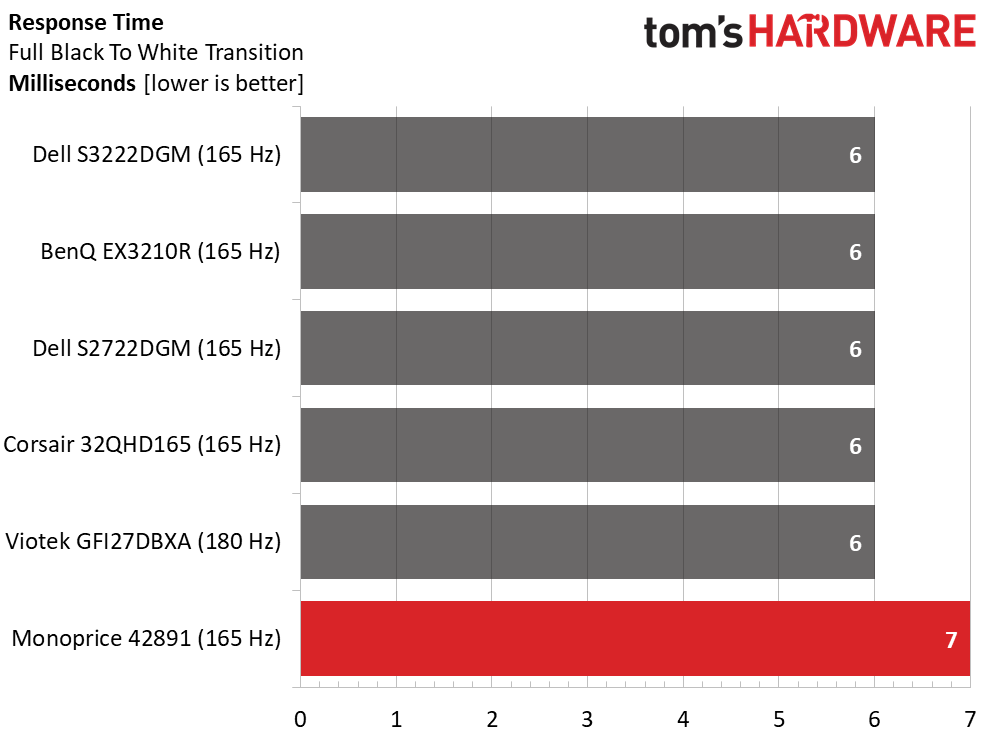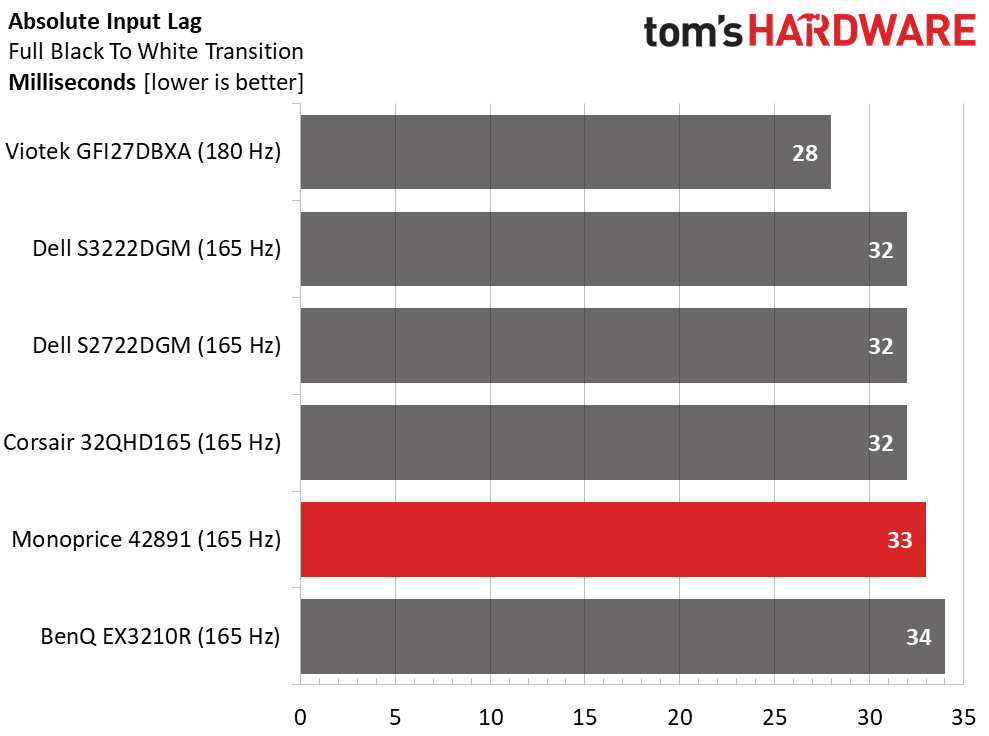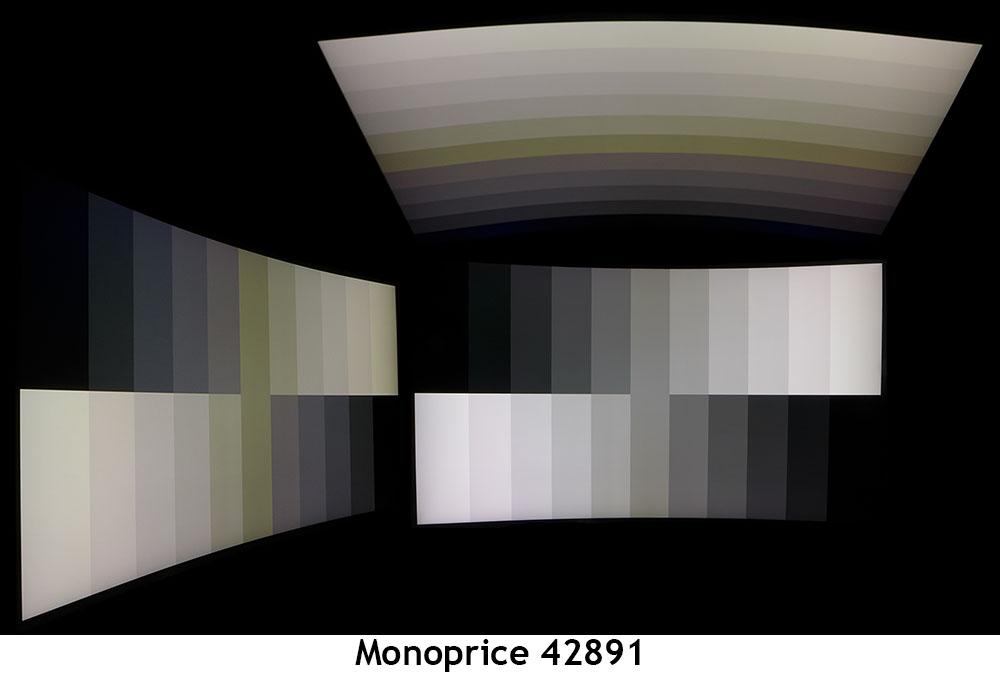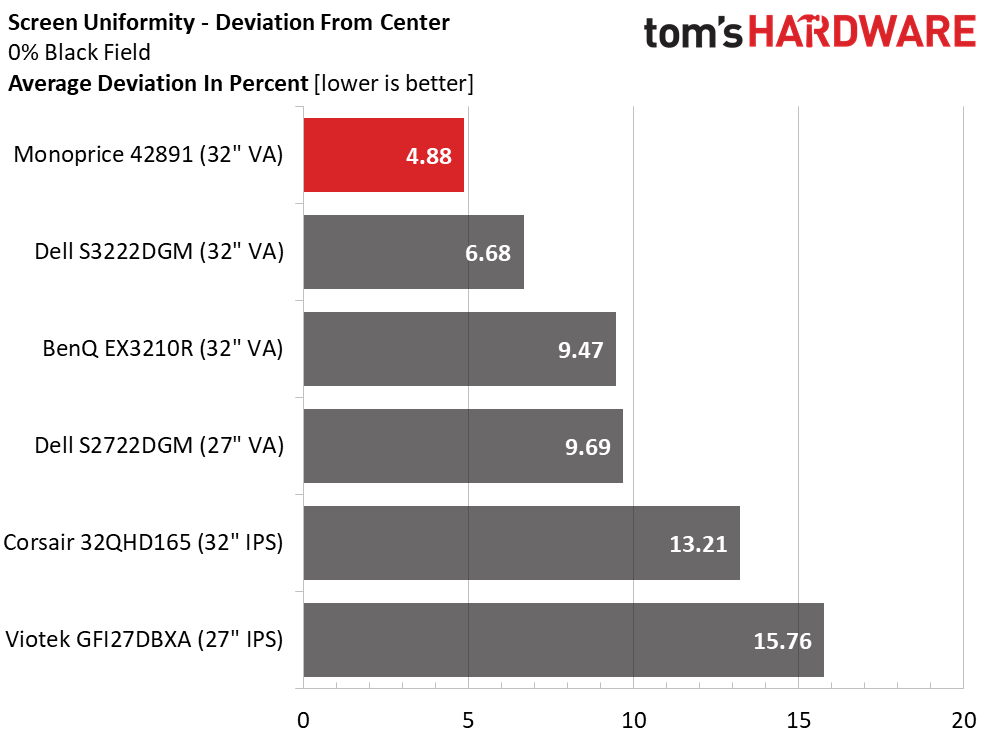Why you can trust Tom's Hardware
With 32-inch QHD screens becoming more common, I found three other candidates in my test database to compare the 42891’s performance. They are Dell’s S3222DGM, BenQ’s EX3210R and Corsair’s 32QHD165. To fill up the group, I’ve included two 27-inch screens – Dell’s S2722DGM and Viotek’s GFI27DBXA.
Pixel Response and Input Lag
Click here to read up on our pixel response and input lag testing procedures.


While most 165 Hz screens draw a full frame in 6ms; the Zero-G 42891 takes 7ms. What does this mean? I could see a slight bit of extra softness during fast-motion sequences, both in test patterns and in-game. The overdrive helps, but the other monitors are just a tiny bit smoother in normal gameplay.
The Zero-G 42891’s input lag is about average for the category at 33ms. The Viotek is above average, helped by its 180 Hz refresh rate, but Monoprice's screen can compete with the others in responsiveness. For most players, casual to skilled, there will be no perception of lag or stutter. If you can take advantage of a faster monitor, you’ll need 240 Hz to satisfy that need.
Viewing Angles
The Zero-G 42891 exhibited some unique behavior in the off-axis test regarding viewing angles. While there is only a slight brightness reduction at 45 degrees to the side, the green tint at the 50% step is clear. That it also appears in the vertical photo suggests it is an issue with sub-pixel alignment. It’s not a flaw, just a quirk endemic to this particular panel part. Obviously, there is no problem when sitting in the center seat and the monitor’s curve doesn’t cause any color or brightness shift.
Screen Uniformity
To learn how we measure screen uniformity, click here.
Though this test is sample-specific, a 4.88% score bodes well for the Zero-G 42891’s quality control. It’s doubtful that any example of this monitor will have a visible problem. I certainly didn’t see any bleed or glow in any full-screen gray patterns. Color uniformity is also perfect as long as your eyepoint is at the screen center, which is exceptional performance.
Get Tom's Hardware's best news and in-depth reviews, straight to your inbox.
Current page: Response, Input Lag, Viewing Angles and Uniformity
Prev Page Features and Specifications Next Page Brightness and Contrast
Christian Eberle is a Contributing Editor for Tom's Hardware US. He's a veteran reviewer of A/V equipment, specializing in monitors. Christian began his obsession with tech when he built his first PC in 1991, a 286 running DOS 3.0 at a blazing 12MHz. In 2006, he undertook training from the Imaging Science Foundation in video calibration and testing and thus started a passion for precise imaging that persists to this day. He is also a professional musician with a degree from the New England Conservatory as a classical bassoonist which he used to good effect as a performer with the West Point Army Band from 1987 to 2013. He enjoys watching movies and listening to high-end audio in his custom-built home theater and can be seen riding trails near his home on a race-ready ICE VTX recumbent trike. Christian enjoys the endless summer in Florida where he lives with his wife and Chihuahua and plays with orchestras around the state.
-
Gorlash This is very frustrating... I have a 30" 2560x1600 monitor (HP ZR30w), which I really love... it has been my treasured gaming machine for over a decade now... the only drawback, is that it doesn't have any of the modern bling - >60hz, adaptive sync, other fancy stuff...Reply
I would love to look at a new monitor with newer tech... but I'm still holding out for 16:10 aspect ratio... maybe I will just die here with the other old farts...

